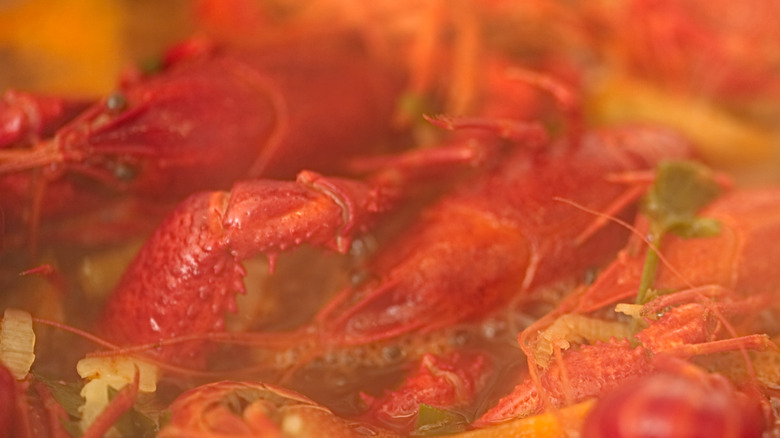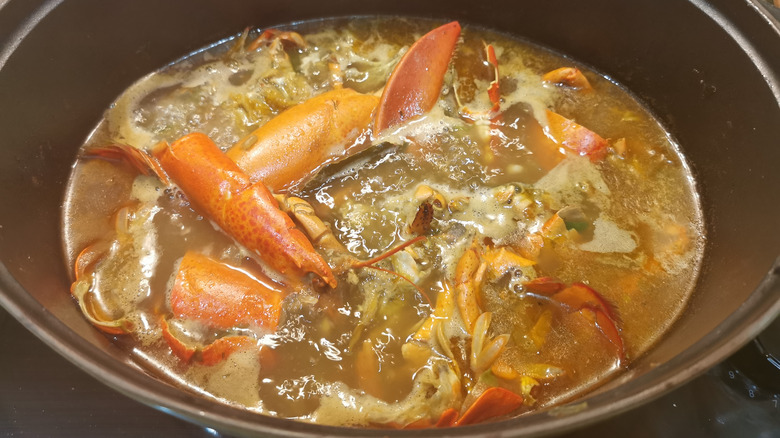The Biggest Mistake To Avoid When Cooking Lobster Stock
There are a few reasons why lobster is considered a delicacy. Apart from its sweet mellow flavor, the fact that it's a pricey protein with (let's be honest) little meat available per piece makes us cherish every bite of this shellfish. Perhaps that's why making lobster stock is such a great idea since you get to use up all the leftover shells and extract every last drop of flavor from the crustacean. However, to ensure your stock is a culinary triumph, you must avoid overcooking it.
Similar to how lobster meat shouldn't be overcooked lest it turn rubbery and dry, overcooking the stock leads to a lackluster liquid. If you thought otherwise, we get it. It's easy to think that the longer you let the lobster shells cook, the more flavor they'll release into the stock — but that's not the case. Cooking lobster stock for too long will often result in an unpleasantly sour or bitter taste. The secret is to avoid boiling the stock for too long on high heat; instead, once it starts boiling, reduce the heat to medium or medium-low and let it simmer for only about 45 minutes to two hours depending on how many lobsters you have.
Tips for a perfect lobster stock
Now that you know what not to do when preparing your lobster stock, we've got a few tips on what to do to make it outstanding. First, note that you can use pre-cooked lobsters, leftover lobster shells, or uncooked lobsters to make your stock. Just ensure they're cleaned and remember to remove and discard the head sac located right behind the eyes. This sac is actually the lobster's stomach and contains granular substances that can produce a gritty texture and impart an unpleasant bitter taste to your stock.
To make your shellfish stock more flavorful, you can saute the shells and the veggies in a little olive oil before adding water and bringing it to a boil. Some cooks even add an extra step of roasting the shells in the oven for a few minutes before they saute. Finally, once the stock is ready, we recommend double-straining the liquid to ensure a smooth and clear stock. You can do this by passing the stock through a fine-meshed sieve two times, or simply placing a cheesecloth on the fine strainer and using that setup to sieve the stock. With that, you can now use your lobster stock as a cooking liquid for a myriad of shellfish-based dishes from creamy seafood risotto, sauces, and soups, to rich lobster bisque, chowder, or stew.

